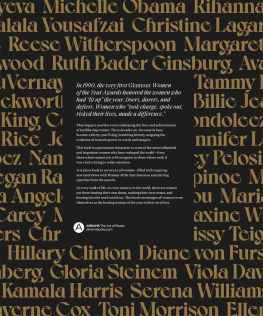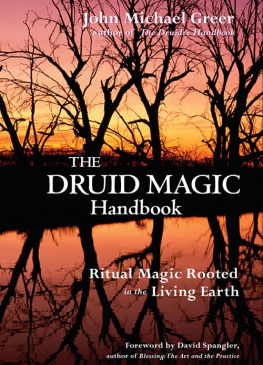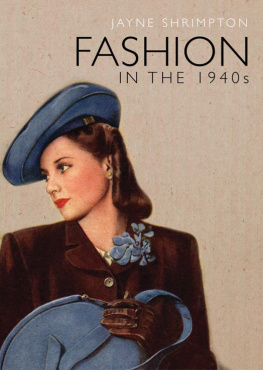The Magic of Fashion
Anthropology and Business: Crossing Boundaries, Innovating Praxis
SERIES EDITOR: Timothy de Waal Malefyt, Fordham School of Business
Both anthropology and business work at the forefront of culture and change. As anthropology brings its concern with cultural organization and patterns of human behavior to multiple forms of business, a new dynamic of engagement is created. In addition to expanding interest in business as an object of study, anthropologists increasingly hold positions within corporations or work as independent consultants to businesses. In these roles, anthropologists are both redefining the discipline and innovating in industries around the world. These shifts are creating exciting cross-fertilizations and advances in both realms: challenging traditional categories of scholarship and practice, pushing methodological boundaries, and generating new theoretical entanglements. This series advances anthropology's multifaceted work in enterprise, from marketing, design, and technology to user experience research, work practice studies, finance, and many other realms.
BOOKS IN THE SERIES
The Business of reativity: Toward an Anthropology of Worth .
Brian Moeran
Intimacy at Work: How Digital Media Bring Private Life to the Workplace .
Stefana Broadbent
The Magic of Fashion: Ritual, Commodity, Glamour .
Brian Moeran
First published 2015 by Left Coast Press, Inc.
Published 2016 by Routledge
2 Park Square, Milton Park, Abingdon, Oxon OX14 4RN
711 Third Avenue, New York, NY 10017, USA
Routledge is an imprint of the Taylor & Francis Group, an informa business
Copyright 2015 Taylor & Francis
All rights reserved. No part of this book may be reprinted or reproduced or utilised in any form or by any electronic, mechanical, or other means, now known or hereafter invented, including photocopying and recording, or in any information storage or retrieval system, without permission in writing from the publishers.
Notice:
Product or corporate names may be trademarks or registered trademarks, and are used only for identification and explanation without intent to infringe.
Library of Congress Cataloging-in-Publication Data
Moeran, Brian, 1944
The magic of fashion : ritual, commodity, glamour / Brian Moeran.
pages cm. (Anthropology & Business ; v. 3)
Includes bibliographical references and index.
ISBN 978-1-62958-372-3 (Hardback : alk. paper) ISBN 978-1-62958-374-7 (Institutional eBook) ISBN 978-1-62958-375-4 (Consumer eBook)
1. FashionSocial aspects. 2. FashionMerchandisingSocial aspects. 3. Fashion photography. 4. FashionPeriodicals. I. Title.
GT525.M645 2015
391dc23
2015020571
ISBN 978-1-62958-372-3 hardback
For Heung-wah, with many, many thanks for being my Chinese son .
And for all those intelligent followers of fashion in my family Anan, Ellie, Jess, Kishan, Kitty, Stephanie, and Ursulawith lots of love .
When Devils, Wizards, or Juglers, deceive the Sight, they are said to cast Glamour oer the Eyes of the Spectator.
ALLAN RAMSAY, A Glossary (1721)
Our scholars betray their frivolity by refusing to take nonsense seriously. Nonsense is also what is most profound in man.
EDGAR MORIN, The Stars (1972)
Any book of this kind, which makes: use of extensive ethnographic data, relies on the immense goodwill and patience of those whom anthropologists like to call "informants." Thus, I want to start by acknowledging the help of numerous people in the fashion magazine world who gave me so much of their time to talk about their everyday work and the challenges they faced in producing their monthly editions of Marie Claire, Elle, Harper's Bazaar, and Vogue. Those who at the time of my research worked for the four magazine titles on which I conducted research, and who graciously went out of their way to help me, include Tomoko Akizawa, Aya Aso, Yasuko Band, Gilles Bensimon, Katie Breen, Guillaume Bruneau, Marie-Noelle Demay, Marion Dufour-Lahore, Florence du Luart, Phane Denis du Page, Yasushi Fujimoto, Didi Gluck, Philippe Guelton, Minoru Ikeda, Misao It, Claire Landrau, Fabrizio Lo Cicero, Mary Lui, Xaven Mak, Shko Matsuzawa, Caroline Mera, Walter Rospert, Kazuhiro Sait, Sylvie Sondard, Makoto Uesaka, Mitsuko Watanabe, Olivia Wong, and Takeshi Yamashita. Because many informants spoke to me extremely freely, I have decided to use pseudonyms when referring to things that they said in our interviews, or when quoting them directly.
Others who came into close contact with people in the fashion magazine world and whose insights helped me enormously include Vittoria dAlessio, Alex Fung, Yvonne Loong, Kinsan Nakamura, Akiko Okada, Jamie Rhind, Kith Tsang, and Shin Yoshida. Those working in the world of fashion itself, and who had important things to tell me about fashion magazines, were Jerome Bonnouvrier, Yasuko Inomaru, Michihiro Ishizaki, Nicci Keller, and Muga Miyahara. Mariko Fujiwara told me interesting things about celebrities in Japan, Wessie Ling about trend forecasting, and my son, Maya Moeran, about composing and producing music for fashion collections. Hidehiko Sekizawa, at the time director of the Hakuhodo Institute of Life and Living, kindly allowed me to cut up and desecrate a whole years supply of Japanese fashion magazines in three consecutive Januarys between 1992 and 1994. Lise Skov always provided a critical voice to my thoughts about womens magazines as they developed slowly over the years. Thank you all for putting up with myfrequently naivequestions and for answering them thoughtfully.
Others from around the world who readily agreed to talk to me their experiences in reading womens fashion magazines include Charlotte Andersen, Barbara Chan, Kobe Chan, Lilie Chouliaraki, Melissa Curley Amy Douglas, Ayaka Fujiwara, Sophie Hoeberechts, Risako Kamei, Junko Kaneko, Tomoko Kawaguchi, Jette Steen Knudsen, Izumi Koishi, Irene Lam, Charmaine Leung, Yoshiko Nakano, Helen Napper, Tomomi Nomiya, Masako mori, Carol Poon, Kirsten Refsing, Yukari Sekiya, Noriko Tabat Yumi Takahashi, Miranda Tsui, Keiko Ueda, Sachiko Ueda, Mari Willumsen, and Yumie Yoshida. Thank you for all the stories, explanations, ironical self-reflections, and occasional savage critiques of your reading matter and habits. When it comes to fieldwork, Ive rarely had such fun in my life.
My next round of thanks must go to David Slijper who, in response to an email message from me to his agent requesting the use of some of his photographs for inclusion in this book, without further ado offered me a whole range of his work for publication (ably assisted by Nick Blumenthal). I have to admit to being overwhelmed by his generosity and am very concerned that The Magic of Fashion may not live up to his expectations.
The same goes for Andrea Klarin, who also generously allowed me to make selections from his portfolio for inclusion in this book. Thank you. I'm only sorry that the academic nature of this book, and its limited reader market, made it impossible to include as many illustrations of the work of both of you as I would have wished.











